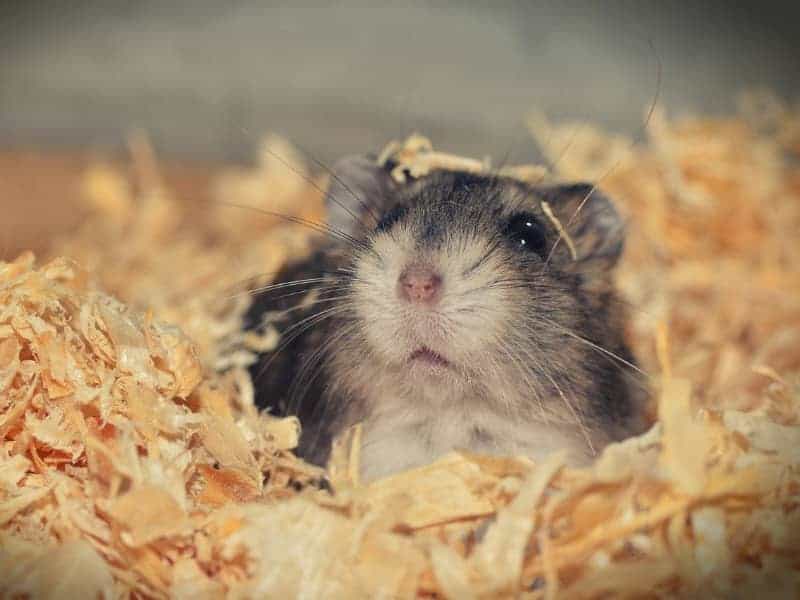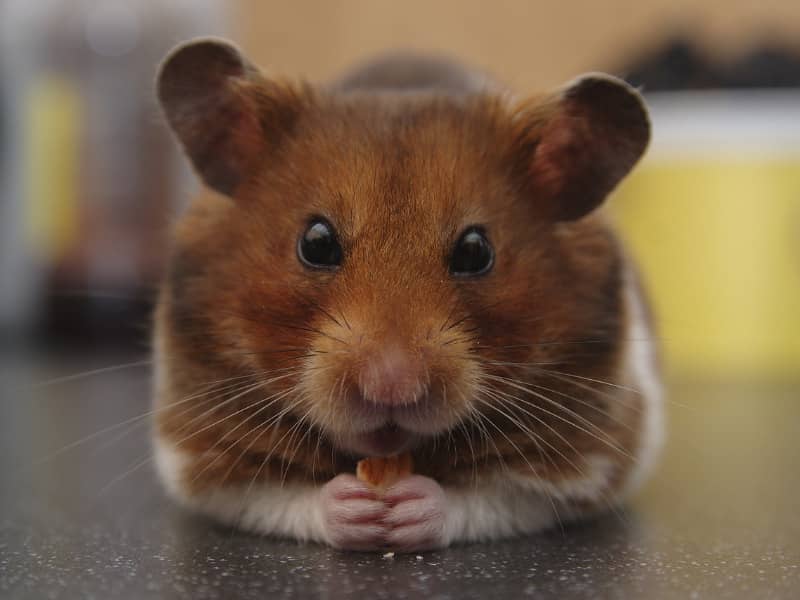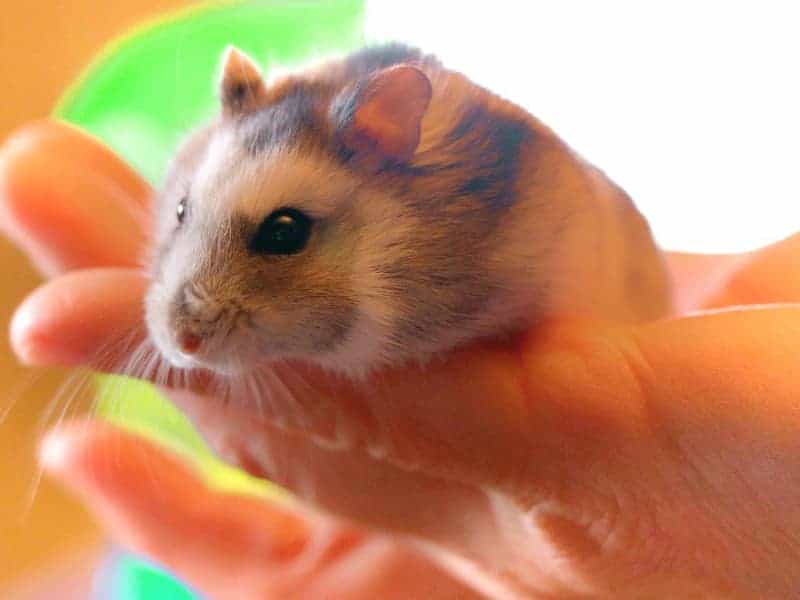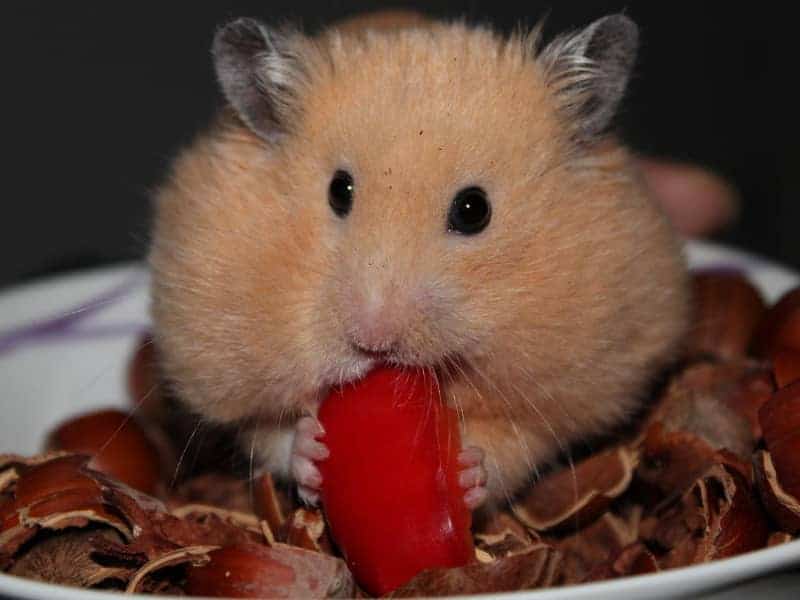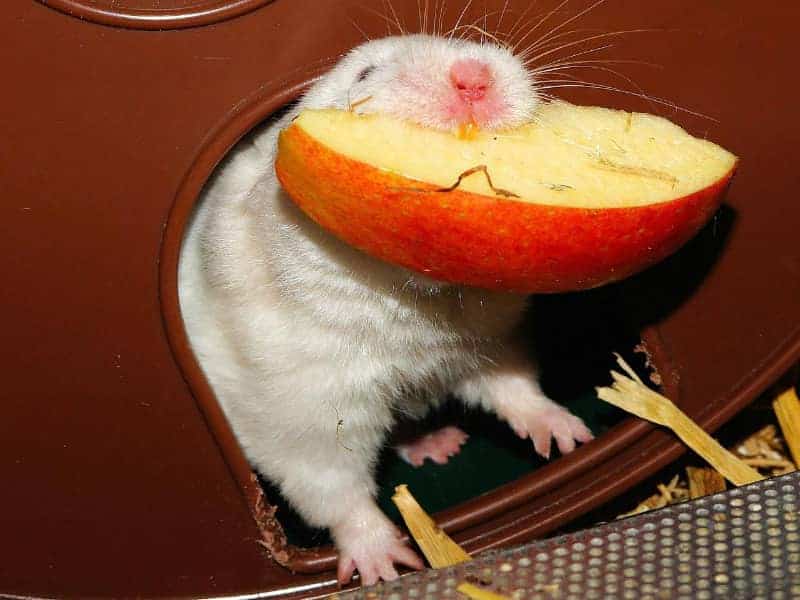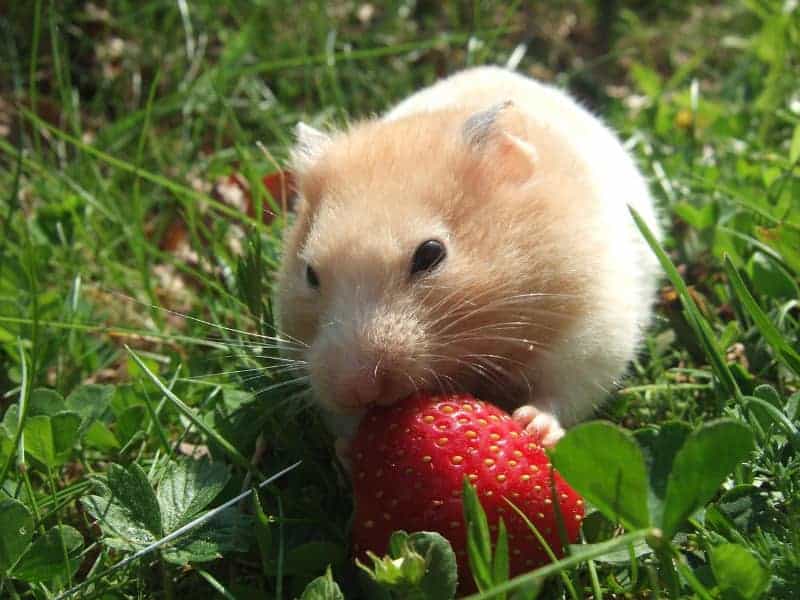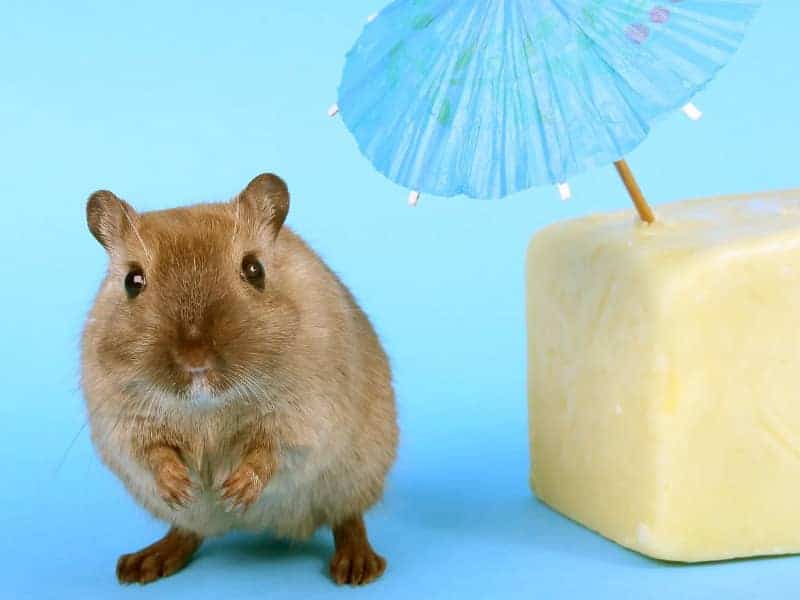
Are hamsters allowed to eat cheese?
Yes, your hamster can eat cheese. However, as with many other foods for the hamster, there are some things to consider here. Not all types are suitable for the hamster. Even if your furball would eat everything immediately, it does not mean that it is good for him. Here you can find out how much cheese your hamster can eat without getting sick.
Do hamsters like to eat cheese?
The hamster in the wild feeds mainly on plants, but if present, it also eats many other things that would not necessarily be on his menu. This includes cheese, which he can get to through us humans. Not all hamsters like cheese, but many are not averse to such a snack and like to eat the cheese.
In principle, there is nothing wrong with it, because a cheese has in the nutrient mix some important ingredients that are important for any organism. The disadvantage with cheese is that it contains a lot of fat. Although fat is an indispensable energy source that provides a lot of energy, too much is extremely unhealthy. In hamsters, too much fat leads to obesity and diabetes.
However, if the cheese is given in small portions, then you do not have to worry as a hamster owner. It is important that you choose varieties that contain little fat. Another point should be that as little salt as possible should be processed in a cheese. An ideal solution to this would be mozzarella, which fulfills both conditions.
How to feed your hamster cheese
If your hamster has never eaten cheese before, you should carefully observe what he does with the offered piece of cheese. There is a 50/50 chance that a hamster will eat cheese at all, so if he accepts the piece of cheese and nibbles on it, you can assume that he likes it. If he rejects it, he would smell it and leave it untouched.
Only in rare cases does the hamster take a piece of the cheese and leave the rest. Almost always, if a hamster perceives a food as good from the smell, he will eat it. So if a hamster leaves the rest of the cheese, it is one of the few specimens that does not rely on its nose 100 %. Now about the amount of cheese you should give a hamster.
For a normal-sized hamster, you should start with pieces of cheese that have an edge length of no more than 1 cm. Your animal can easily grasp these pieces and nibble on them. For dwarf hamsters you should halve the piece of cheese, i.e. 0.5 cm edge length. Dwarf hamsters are not as tolerant of weight gain and diabetes as the larger specimens. Therefore feed very carefully here.
Your hamster should not get more than one piece of cheese per week.
What types of cheese can hamsters eat?
Here you must pay close attention to the fat content of the respective cheese. Otherwise, even small amounts can lead to overweight in your animal. The calorie density of cheese is very high and therefore please follow our feeding recommendation. As we have already written, the cheese should be low in salt in addition to the low fat content.
It is also important that you make sure that the cheese contains as little lactose as possible. Because many hamsters have a lactose intolerance and can react accordingly with diarrhea to the cheese. Therefore, once again the recommendation to pay close attention to how your hamster reacts after eating this for him previously unknown food.
Especially soft cheeses are recommended for the hamster, these include:
- Mozzarella
- Ricotta
- Harz cheese
- Cream cheese (low salt)
You should avoid salty cheeses and processed cheeses that have melting salts added to them. Here are some examples:
- Processed cheese (slices)
- Parmesan
- Cheddar
- Gouda
- Long aged cheeses, these usually contain more salt due to drying.
- Cheeses mixed with additives or herbs and spices.
- Cheese, which are finished with mold. These are toxic to the hamster.
You should also refrain from offering the hard cheese rim to your hamster. Often this is mixed with a lot of salts, but also other bioactive substances have been deposited in it during the ripening process.
Are all hamster species allowed to eat cheese?
Yes, all hamster breeds are allowed to eat cheese. However, as mentioned several times, the quantity determines whether it is healthy for your animal. Otherwise, there is nothing wrong with this treat for your hamster. However, you should always keep in mind that dwarf hamsters are particularly susceptible to diabetes and obesity. Therefore, pay special attention to our feeding recommendations.
It's actually good that your hamster gets some cheese occasionally, because animal protein is a good source of protein. Hamsters regularly eat insects in the wild to provide their protein intake. However, many hamster owners do not offer animal protein to their animals. So the cheese can help, at least to a small extent, to make up for this deficit.
If your hamster does not like cheese, then this is not bad. Alternatively to the cheese can offer your hamster mealworms. These are almost odorless in the dried state and are gladly accepted by almost 100 % of the animals. Mealworms are high in protein and provide the vital animal proteins that your hamster needs.
Every day cheese for the hamster?
In no case, as we have already described in detail above, the fat content would be much too high and your animal would quickly become fat. Obesity promotes a wide variety of diseases. Most often it is diabetes and especially dwarf hamsters are very susceptible to it. Therefore, pay attention to our feeding recommendations, which we list here once again.
A large hamster should get a maximum of one piece of cheese with an edge length of 1 cm per week. A dwarf hamster significantly less here we recommend a piece of cheese with an edge length of 5 to 6 mm maximum per week.
How healthy is cheese for the hamster?
Ingested in small amounts, the cheese is healthy for the hamster, but you must take into account how much fat is in each type of cheese. Therefore, we have created a small table on how you can calculate the fat content of a cheese.
| Cream cheese | Fat in dry matter | x 0.3 |
| Soft cheese | Fat in dry matter | x 0.5 |
| Semi-hard cheese | Fat in dry matter | x 0.6 |
| Hard cheese | Fat in dry matter | x 0.7 |
Fat i. Tr. Is the abbreviation for fat in dry matter and should be indicated on every cheese package you buy. We will be happy to show you an example of how you can quickly calculate the fat content of a cheese.
Example: A soft cheese has 50 % fat in dry matter. This would mean that the absolute fat content is: 50 % fat in dry matter x 0.5 = 25 g fat/100 g soft cheese.
Due to the large variety of cheese types, there is no uniform value for the ingredients, so we only provide you with a list of the possible ingredients here. We would like to make it more detailed, but this would go beyond the scope here. Therefore, here are the most important ingredients of the cheese.
- Vitamin A
- Vitamin D
- Vitamin B1, B2, B6, B12
- Folic acid
- Calcium ß large amount, important for the bones
- Magnesium
- Phosphorus
- Potassium
- Zinc
As always, we recommend that you use organically produced products. They are healthier and more compatible for humans and animals. However, the most important aspect is that the animals from which the milk is obtained are housed in better conditions than in conventional farms.
Hamster does not tolerate cheese, how to recognize?
Should hamsters not tolerate a food, such as cheese, then this is almost always recognizable by their feces. This can be diarrhea-like, or very soft. In this case, you should refrain from offering cheese to your hamster. In such a situation, it is mainly important that your hamster gets food that does not further promote this soft stool or diarrhea.
Therefore, refrain from water-containing food until your animal's bowel movements have returned to normal. Offer him his normal dry food during this time and observe your animal closely. If the diarrhea lasts longer than 24-36 hours and your pet becomes lethargic, you should consult a veterinarian.
Conclusion: Are hamsters allowed to eat cheese?
Yes, your hamster may eat cheese if you watch your hamster closely at the beginning of the feeding phase. If he does not react to the unfamiliar food, as we have described in detail above. Then your hamster may eat a piece of cheese from a low-fat type of cheese no more than once a week.
Author

-
Garden animal - A life with nature
Welcome to my animal blog! My name is Dirk and I am happy to take you on my journey through the fascinating world of animals and gardening.
Born 54 years ago, I have had an insatiable curiosity for the animal world around me since childhood. Although I have moved professionally in other industries, my true passion has always been animals and nature. It is remarkable how a small garden has become such an important part of my life.
Many of my fondest memories are associated with the animals that share our home. Whether it's the curious squirrels that scurry across the trees in the morning, the colorful variety of birds that visit our feeders, or the busy bees and butterflies that pollinate our flowers, every moment with them is invaluable to me.
This blog is my contribution to share my experiences, discoveries and insights with like-minded people. Here I will share stories of unforgettable encounters with animals, give tips on gardening and creating wildlife-friendly habitats, and take you on my journeys through nature.
Thank you so much for being here!
Cordial,
Dirk aka garden animal
Last posts
- 27. February 2024PetsVeganes Hundefutter – Grün und Gesund?
- 18. January 2024ChickensOregano für Hühner
- November 27, 2023HamsterDiurnal hamsters
- November 24, 2023HamsterHamster hammock

